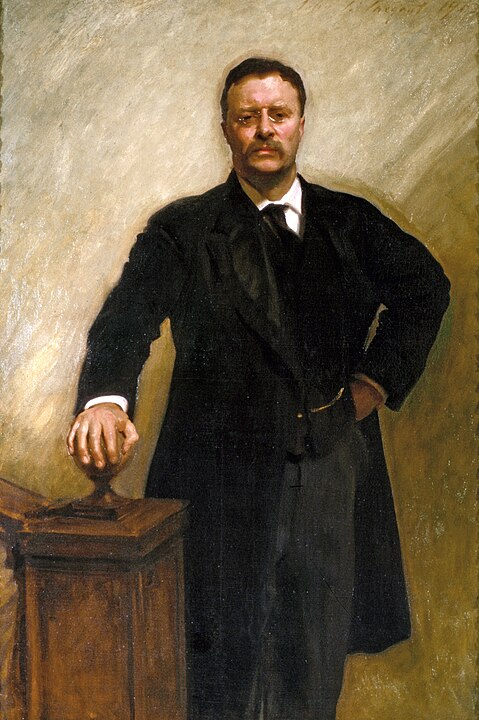Theodore Roosevelt is considered by many Americans to be one of the greatest US presidents in history, as he was able to bring in reforms during the progressive movement of the 20th century, which allowed the United States of America to rise as a top country in the world. His is also very recognizable for his walrus mustache. The success of his tenure as US president was mainly attributed to his “Square Deal,” a program that sought regulations on food and drugs, railroads, and domestic policies, as well as giving fairness to average citizens in terms of privileges.
Although his success as an adult was widely covered in history books, there are only some people that actually know that Theodore Roosevelt was sickly during his childhood due to a debilitating asthma. However, through his hard work to maintain a strenuous lifestyle and diet, as well as the overwhelming support of his family, he was able to overcome his asthma to become one of the most successful human beings in history. Of course, we cannot discuss his childhood without talking about his birthplace, and in this article, we are going to focus on the background of Theodore Roosevelt’s first home, which is located at the center of New York City. This is the history of Theodore Roosevelt’s birthplace.
Cornelius Van Schaack Roosevelt’s Mansion
Cornelius Van Schaack Roosevelt, better known by his name’s acronym CVS, was Theodore Roosevelt’s grandfather who became wealthy after having a successful business in plate glass importing. After getting enough money to buy a new house, CVS moved his family to Union Square, a now historic intersection in Manhattan, New York, and built a mansion on the side of a road (now called Broadway). Note this is different than Roosevelt Island located in Manhattan as well.
In addition to building a mansion in Union Square, CVS also bought houses in neighboring areas and streets and gifted them as wedding presents for his five sons after they married. One of the houses CVS bought in East 20th Street was given to Theodore Roosevelt Sr. and Martha Bullock, Theodore Roosevelt’s parents.
House No. 28
Theodore’s parents moved into the house (House No. 28) in 1854, four years before the president’s birth. Interestingly, the house has a neighboring townhouse (House No. 26) that looks identical to it, and that one belonged to Theodore’s uncle Robert Barnwell.
The two townhouses are made of brown sand stone (brownstone), a material considered to be trendy during that time. However, the architecture of those townhouses did not catch on quickly, as it would often clash with the design of the Victorian era, thus preventing homeowners to decorate their homes with matching interiors and exteriors. But, in the middle years of the 1800s, most of the houses in New York already have the brownstone architecture.
The Interior of Theodore’s Birthplace
In his 1913 autobiography, Theodore Roosevelt described his house to have black haircloth furniture in the dining room that would often cause scratches to children whenever they sit on it. Then, he said that the middle room of the house was a library that was full of bookcases that are accompanied with tables and chairs. The front room, which was the house’s parlor, was Theodore’s favorite room when he was a child, as it is there where he and his siblings would play, although the parlor would also be used for parties and other general gatherings.
Moving of Theodore’s Family
Theodore’s family lived in House No. 28 in East 20th Street until 1872, when they moved to 57th Street after the street of their home became more commercial and too busy for a family to live in. Then, in 1896, the house was turned into a store, and the owner added bay windows at the front of the building so that people could easily see what’s inside the store from outside. The building was eventually demolished in 1916 in order to replace with a two-story retails space.
Rebuilding of Theodore’s Birthplace
After the death of Theodore Roosevelt in 1919, his family bought the space and the building next door that was once his uncle’s house with the intention of rebuilding Theodore’s birthplace. With the help of the Women’s Roosevelt Memorial Association, Theodore’s birthplace was successfully rebuilt with five rooms and an added exhibit gallery and auditorium. His uncle’s house, which was still intact during that time, was used as a replica to perfectly rebuild the birthplace.
In 1953, The Women’s Roosevelt Memorial Association merged with the Roosevelt Memorial Association to create the Theodore Roosevelt Association, an organization that later donated Roosevelt’s birthplace to the National Park Service in 1963. As a property of the National Park Service, it was immediately recognized as a National Historic Site, and it has been registered on the National Register of Historic Places since October 15, 1966. Today, the birthplace is named the Theodore Roosevelt Birthplace National Historic Site and serves as a museum filled with memorabilia and other important items that belonged to the popular US president.

